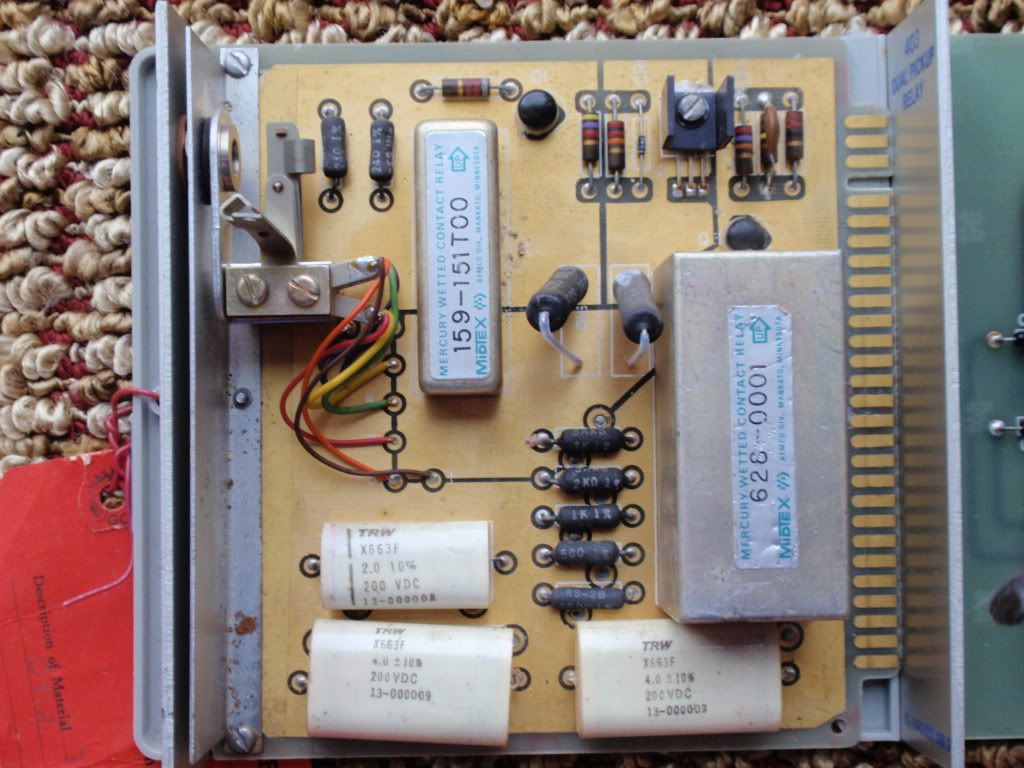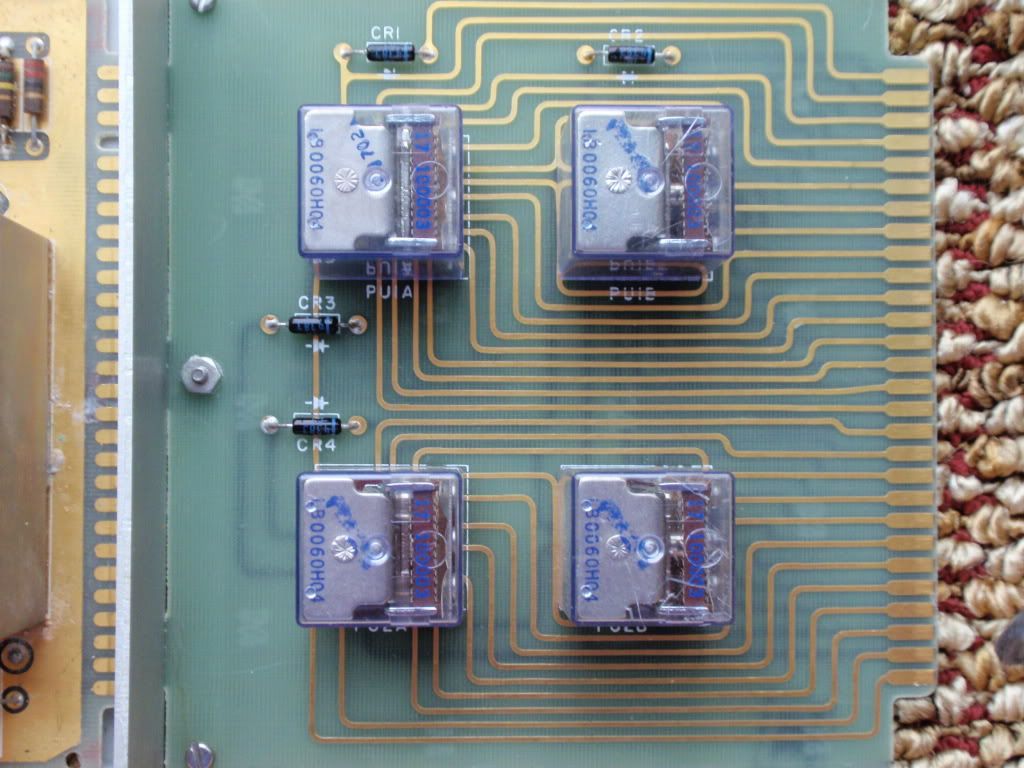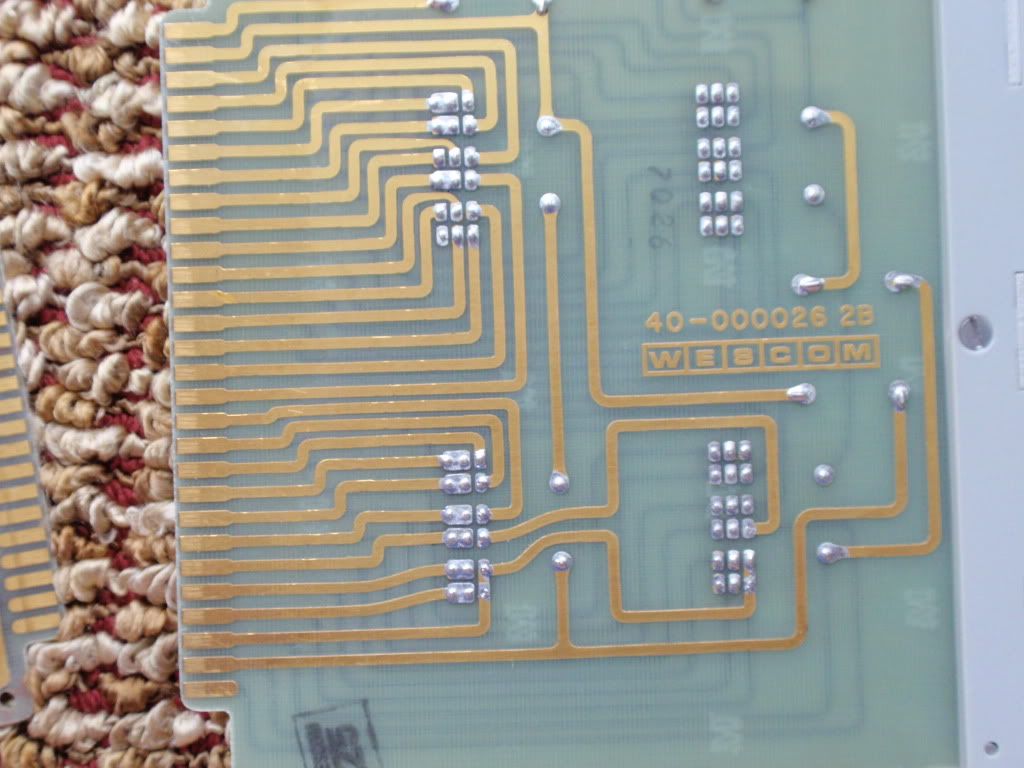You are using an out of date browser. It may not display this or other websites correctly.
You should upgrade or use an alternative browser.
You should upgrade or use an alternative browser.
nice old boards
- Thread starter floppy
- Start date

Help Support Gold Refining Forum:
This site may earn a commission from merchant affiliate
links, including eBay, Amazon, and others.
element47
Well-known member
Boy, that would seem to be the ideal genre of boards for PC PM extraction: No solder mask and the *entire* trace is gold plated vs just the contact fingers. Very nice!
They do look nice dont they. But they aren't pc cards. They are old telcom cards. I don;t know exactly how old but the one has a repair card attched to it thats dated 1975. So I assume that they're atleast older than that. The traces are very thick. I can actually use a knife to peel the edge of one the fingers up and pull the entire trace off. I'm pretty interested to see what kind of yield these will give. If anyone in here has seen these or processed boards similar I sure would be interested to hear about it.
floppy said:They do look nice dont they. But they aren't pc cards. They are old telcom cards. I don;t know exactly how old but the one has a repair card attched to it thats dated 1975. So I assume that they're atleast older than that. The traces are very thick. I can actually use a knife to peel the edge of one the fingers up and pull the entire trace off. I'm pretty interested to see what kind of yield these will give. If anyone in here has seen these or processed boards similar I sure would be interested to hear about it.
Don't be fooled by the traces. They are only about 1% gold, or less, by weight, if my math is right. A thin layer of gold over a thicker layer of nickel over a thick foil of copper. And then there's the adhesive.

$88.86
$171.00
Catalysis in the Refining of Fischer-Tropsch Syncrude (Catalysis Series, Volume 4)
Basi6 International

$8.99
$9.55
Jewelry Pliers Set - Needle Nose, Round Nose and Wire Cutters for Jewelry Making, Repair and Crafts
Shynek Online

$55.30
$79.00
Trezor Safe 3 - Passphrase & Secure Element Protected Crypto Hardware Wallet - Buy, Store, Manage Digital Assets Simply and Safely (Solar Gold)
Trezor Company s.r.o.

$245.67 ($0.06 / Ounce)
50 lb Sodium Nitrate Fertilizer 99+% Pure Chile Saltpeter Gold Metal Refining Industrial Grade Glass Pottery Enamels
Duda Energy

$12.99 ($12.99 / Count)
ZOYER Thumb Brace, Thumb Spica Splint for Left and Right Hand, Breathable Wrist Brace with Thumb Support for Arthritis, De Quervain's Tendonitis, Carpal Tunnel, Pain Relief, Sprains
Global Roots Industries Inc

$29.90
$33.00
JSP 12 Bottles 22k Gold Metal Test Acid Karat Testing Liquid Solution Jewelry Teste
Era Dental Supply

$150.10
$200.00
Hydrotreating and Hydrocracking Processes in Refining Technology (Petroleum Refining Technology Series)
Prime Deals, USA

$14.99
Madison Tyler Gold Plated Stackable Bangles, 5 piece of Smooth Bangles with Ball Pattern & 6 Piece of Textured Bangles.
Tanya Creations Fashion Jewelry

$16.71 ($2.39 / Count)
$21.99 ($3.14 / Count)
WORKPRO 7-Piece Jewelers Pliers Set, Jewelry Making Tools Kit with Easy Carrying Pouch (Blue)
GreatStar Tools

$18.39
Moneysworth & Best Brillo Nu-Life Leather/Vinyl/Plastic Color Renew Spray 4.5 oz, 024 Gold
Shoe and Boot Accessories 4 U

$4.88 ($0.98 / Count)
$9.99 ($2.00 / Count)
Newte Damaged Screw Extractor - Remover for Stripped Head Screws Nuts & Bolts, Drill Bit Tools for Easy Removal of Rusty & Broken Hardware, High Speed Steel | Superb Gift for Men | Gold
Niudai1

$248.12
The Extraction and Refining of Metals (Materials Science & Technology Book 2)
Amazon.com Services LLC

$6.99 ($0.14 / Count)
$7.99 ($0.16 / Count)
Beauticom 3g/3ml (0.1 Fl Oz) Round Clear Plastic Jars with Round Top Lids for Creams, Lotions, Powders, Glitters, and more... (Color: Clear Lid, Quantity: 50 Pieces)
Beauticom

$19.19
$130.00
Petroleum Refining: Technology and Economics, Fifth Edition
Triple R Trading Company

$429.99
HP Newest 17.3" HD+ Laptop, AMD Athlon Gold 7220U Processor, 8GB DDR5 5200MHz RAM, 512GB SSD, AMD Radeon Graphics, Optimized for Lighter Business workloads, Windows 11 Pro, WOWPC Recovery USB
Oydisen WOWPC (Next Day Shipping Available)

$649.99
$899.99
Garmin fēnix 7S Pro Sapphire Solar, Multisport GPS Smartwatch, Built-in Flashlight, Solar Charging Capability, Sand
Amazon.com

$80.52
$115.00
Petroleum Refining: Technology, Economics, and Markets, Sixth Edition
Woodville Books
floppy said:How did you come up with that number. Do you know those boards or something?
Keeping it simple, most all boards start with a solid foil of copper (attached to the board material with adhesive) that weighs from 28.4 grams (1 av oz) to 56.8 grams (2 av oz) per square foot. Through a series of masking, etching, and plating steps, the copper is etched away from certain areas, nickel and gold [or any other metal(s) desired, such as tin or Sn/Pb solderplate] are plated on top of the copper, and the desired circuitry is formed. In the case of fingers, the nickel is about .0002" to .0005" thick and the gold about .00003" thick. The gold might be thinner than this but will usually not be thicker. There has probably never been a board made with solid gold traces. It would be extremely wasteful.
All you need is enough gold to prevent corrosion to the underlying base metals and/or to be thick enough and hard enough to allow multiple insertions without wearing through the gold layer. Also, in some cases, it must be thick enough to act as an etchant mask. For things such as fingers or connector pins, .00003" of gold (about .0095 grams per square inch) is adequate and this thickness has been used at least since I started in this business in 1966. There are thinner or thicker exceptions but the exceptions don't include solid gold fingers or traces.
In re-doing the math, I came up with the gold percentages on finger traces ranging from about 1.5% to 4%, by weight. Sorry about my error. I'm old and it's late.
element47
Well-known member
"PC" can mean "printed circuit" or "personal computer" when referring to boards; or "politically correct" in other contexts.
got ya element. sorry bout the mix up. And thank you for the explaination GSP. I will definitely dispose of the mercury relays stihl. As for the gold content there still has to be more than just processing the finger contacts alone. Especially out of a few hundred or more.
silversaddle1
Well-known member
Oz said:I just have to ask. How will you dispose of the mercury now that you are the owner of it?
Our local landfill will take mercury switches and so forth, no charge.
patnor1011
Well-known member
He can de-solder them and sell on ebay.
I would be reading up on those switches to see if their are any PM's inside, who knows, their could be a nice little chunk of gold inside...
Although the Mercury switches would probably be be a pain to process.
Could one use heat Distillation to process the switches if there was found to be PM's inside worthy of salvation?
Although the Mercury switches would probably be be a pain to process.
Could one use heat Distillation to process the switches if there was found to be PM's inside worthy of salvation?
maltfoudy
Well-known member
if you take the plastic covers off those relays and turn down the little reeds you will see contact points,i have lots of boards simular to the ones pictured and they have gold color points,very small but they are there.
qst42know
Well-known member
patnor1011 said:He can de-solder them and sell on ebay.
I am certain there are shipping regulations against that, with stiff penalties if caught.
patnor1011
Well-known member
qst42know said:patnor1011 said:He can de-solder them and sell on ebay.
I am certain there are shipping regulations against that, with stiff penalties if caught.
Probably not. You can buy whole range of electronics or part which contain mercury without any problem. He would not ship mercury by kilos only few relays.



























































